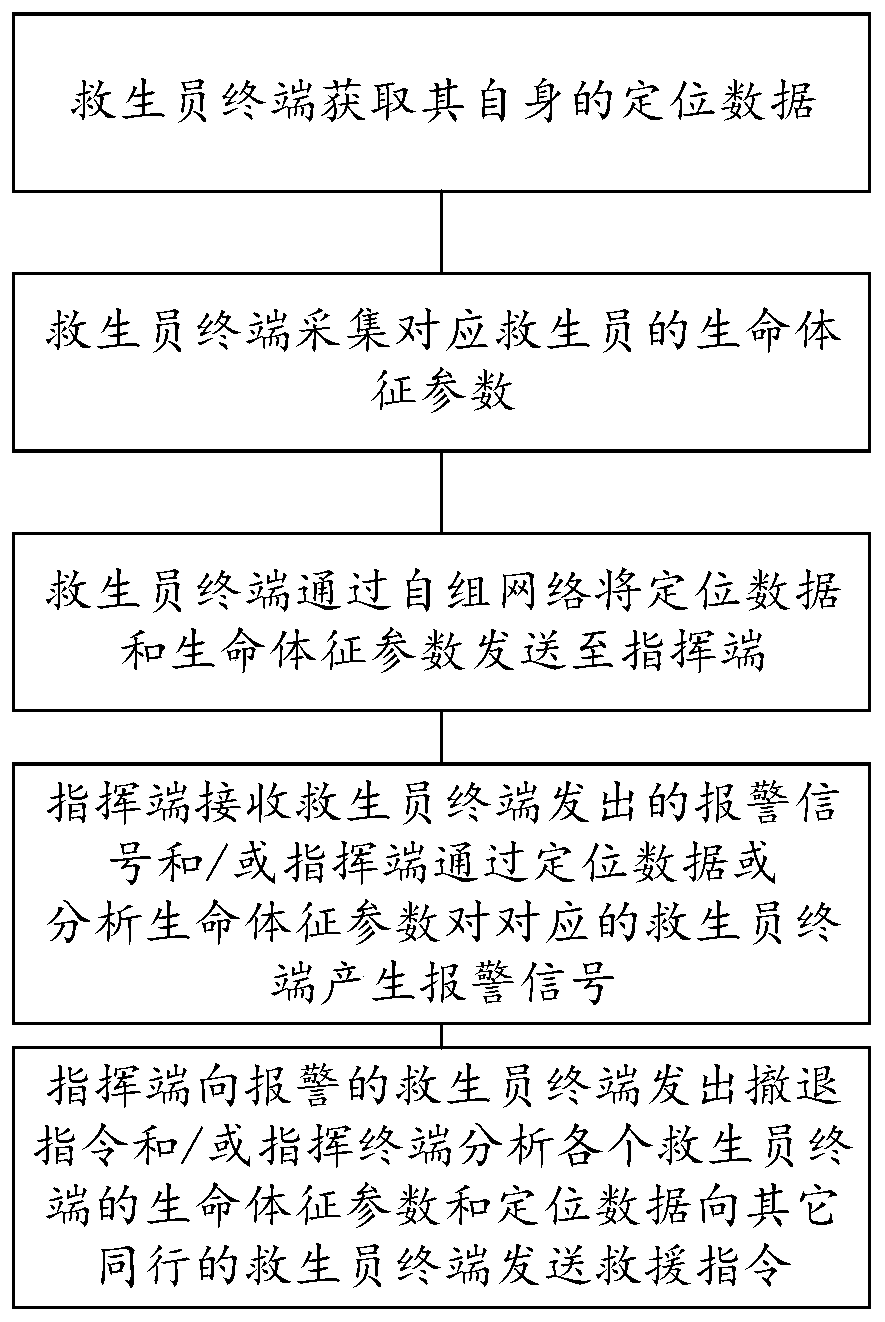Companion based water area alarm method and device, electronic equipment and storage medium
A water area and companion technology, applied in the direction of alarms, electrical components, instruments, etc., can solve problems such as loud noise, danger to rescue teams, and increased risk of lifeguards in distress, so as to ensure safety, high degree of danger and unknown, and difficulty in rescue big effect
- Summary
- Abstract
- Description
- Claims
- Application Information
AI Technical Summary
Problems solved by technology
Method used
Image
Examples
Embodiment 1
[0048] The command terminal receives the alarm signal sent by the lifeguard terminal.
[0049] At this time, the lifeguard terminal is provided with an alarm button. If the lifeguard terminal is still conscious after being in danger, it can actively press the alarm button to send an alarm signal.
[0050] The command terminal sends a evacuation command to the alarming lifeguard terminal and / or the command terminal analyzes the vital sign parameters and positioning data of each lifeguard terminal and sends a rescue command to other lifeguard terminals in the same line.
[0051] After receiving the alarm signal from the lifeguard terminal, the command terminal can immediately issue a retreat command to the alarming lifeguard terminal, and the corresponding lifeguard can withdraw from the rescue at this time; if the lifeguard cannot withdraw from the rescue at this time, a companion is required In the rescue, the command end can also timely command the lifeguards in the same comp...
Embodiment 2
[0054] On the basis of Embodiment 1, an automatic alarm scheme is set.
[0055] Through the analysis of the vital sign parameters collected by the lifeguard terminal, whether the state of the lifeguard is suitable for continuing to perform tasks, specifically, the vital sign parameters are set with parameter thresholds, and the command terminal analyzes whether the vital sign parameters of the lifeguard terminal that alarmed Reach or exceed the threshold to judge whether the lifeguard terminal is in real distress. Generally, rescuers in distress will also be accompanied by changes in vital sign parameters. Through this step, the command terminal can quickly analyze the terminal in distress, and make an alarm in time and send out an alarm signal.
[0056] The command terminal judges according to the vital sign parameters received by it. If it exceeds the set parameter threshold, the command terminal can also alarm synchronously, so that the command terminal can also report to t...
Embodiment 3
[0059] On the basis of Embodiment 1 and Embodiment 2, an automatic alarm scheme is also provided.
[0060] The command terminal generates an alarm signal to the corresponding lifeguard terminal by analyzing the positioning data.
[0061] A distance threshold is set between the lifeguard terminals, and the command terminal calculates through the positioning data of the lifeguard terminals whether the distance between the lifeguard terminal generating the alarm signal and other lifeguards in the same line exceeds the distance threshold, such as exceeding the distance threshold, Then it is judged that the lifeguard terminal calling the police is really in distress. Rescue activities in waters generally allow the lifeguards in the same group to act in a unified manner to avoid falling behind. If a lifeguard falls behind, it can be determined to a certain extent that the lifeguard is in danger, and the command terminal will promptly call the police, so that the lifeguards in the sa...
PUM
 Login to View More
Login to View More Abstract
Description
Claims
Application Information
 Login to View More
Login to View More - R&D
- Intellectual Property
- Life Sciences
- Materials
- Tech Scout
- Unparalleled Data Quality
- Higher Quality Content
- 60% Fewer Hallucinations
Browse by: Latest US Patents, China's latest patents, Technical Efficacy Thesaurus, Application Domain, Technology Topic, Popular Technical Reports.
© 2025 PatSnap. All rights reserved.Legal|Privacy policy|Modern Slavery Act Transparency Statement|Sitemap|About US| Contact US: help@patsnap.com


